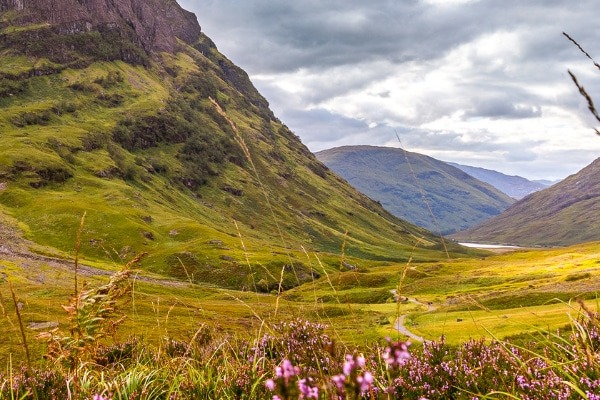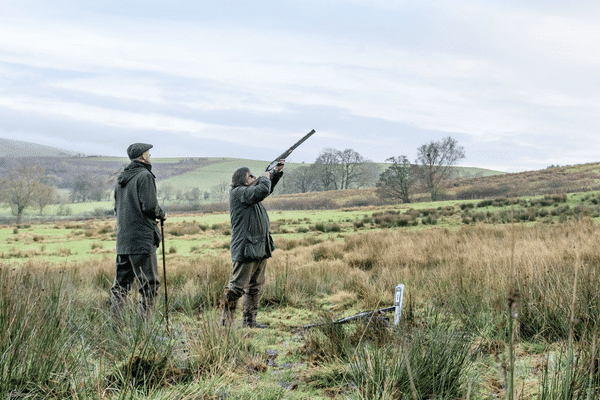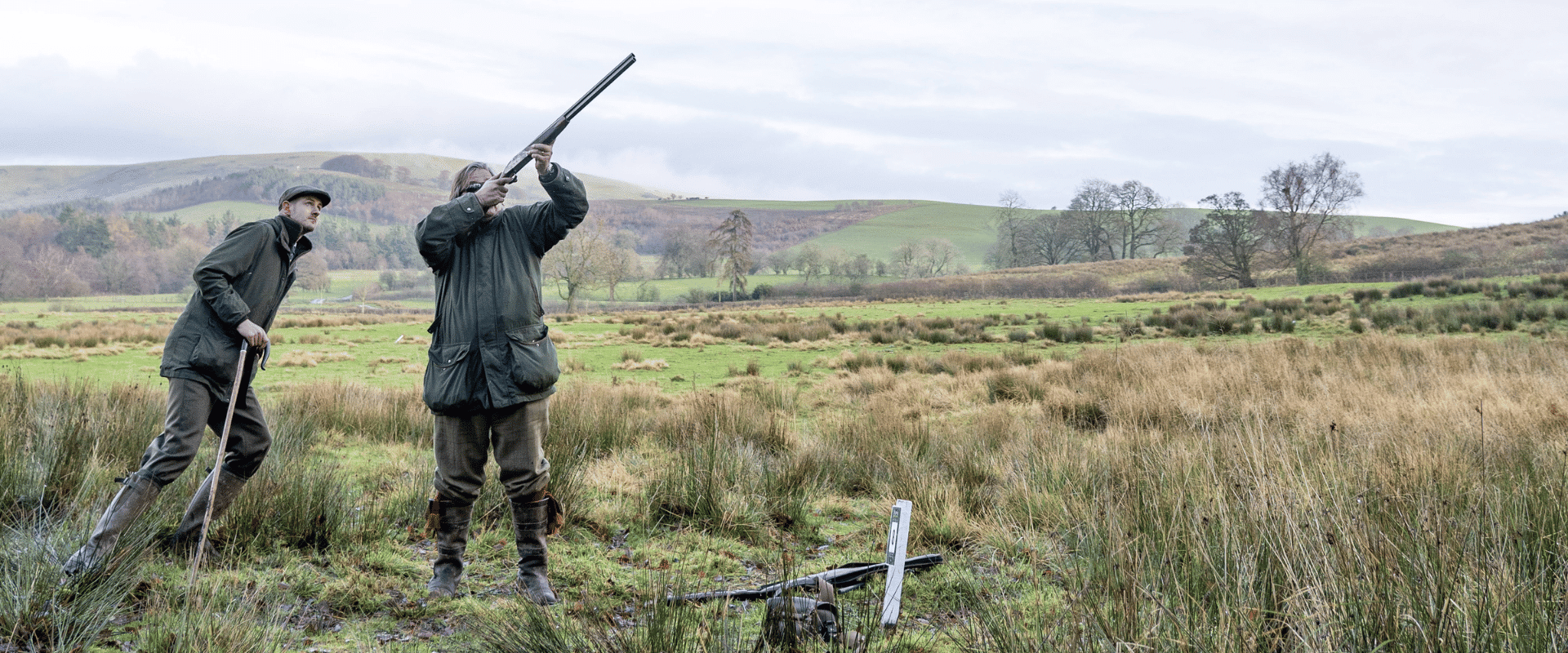
5 minutes with BASC’s director of Scotland Peter Clark
BASC’s newly appointed director of Scotland Peter Clark talks about his plans and the challenges facing shooting in Scotland and the UK.
Get information on the legal shooting season for mammals and birds in the UK.
Learn about our current conservation projects and how you can get involved.
Comprehensive information and advice from our specialist firearms team.
Everything you need to know about shotgun, rifle and airgun ammunition.
Find our up-to-date information, advice and links to government resources.
Everything you need to know on firearms law and licensing.
All the latest news and advice on general licences and how they affect you.


Shooting should be about quality rather than quantity, says Sir Johnny Scott. This article first appeared in the latest issue of Shooting and Conservation magazine.
After all the disruptions caused by Covid-19 over the last three years, the sporting world was really looking forward to and desperately needed a decent, uninterrupted, disaster-free season. Sadly, for many, this was to be a forlorn hope as French game farmers who supply the UK with the vast majority of partridge and pheasant hatching eggs, day-old chicks and seven-week-old poults, were devastated by the biggest outbreak of avian flu in living memory. Consequently, it is estimated that more than a third of shoots have cancelled this season, with a catastrophic impact on rural communities.
The knock-on effect from a disastrous season affects the whole of rural society and the countryside suffers. Those shoots that are continuing with limited days and reduced numbers are hit by the escalating costs of fuel and electricity (with the price of wheat driven to over £400 a tonne at one time by Putin’s war in Ukraine and the global food crisis). Soaring costs are reflected in the price of poults available from the comparatively few UK-based game farms, too (I have heard fantastic prices quoted – £10 for pheasant and more for a partridge – and that’s if you were lucky enough to find any).
Even without avian influenza – which, as I write, is being reported in wild and captive birds across the UK – the prices of raw materials are likely to be with us for the foreseeable future and shooting is going to be even more expensive. Maybe the time has come for shoots to put down fewer birds and for the emphasis to be on appreciation of the day, rather than on numbers shot.
John Henry Walsh, the editor of The Field magazine from 1857 to 1888, once remarked that it was a disgraceful thing when the quality of the day was measured by the weight of the bag and this rings as true today as it did then. Shooting should be about quality rather than quantity. A lower stocking rate inevitably means less disease, reduced mortality, higher welfare standards,a greater value for the bird once it reaches the food chain and ultimately, less for our detractors to agitate against.
I think that perhaps now is the opportunity for the industry to consider an alternative way of charging for shooting; selling by the bird does not sit well with the general public and it would be much more appropriate to charge by the day.
In the spirit of adapting to altered circumstances, I notice more shooting agents are offering mini driven and walked-up days, giving Guns the chance of a crack at everything from pheasant, partridge, and duck, to snipe, pigeon, rabbit, hares and even the occasional woodcock. These mixed bag small days are proving immensely popular, with Guns shooting a combination of walked-up birds flushing from cover as the team walks the ground and driven birds, where they are strategically placed while areas of thicker cover are beaten to them.

The focus of these days is on some of the hedgerows and spinneys lying further out from the heart of a shoot. These often provide the most rewarding sport, given the variety of game on offer. Additionally, there is the pleasure of seeing more of the splendour of the countryside in all its winter glory, the joy in watching dogs work and the sense of achievement as a bag builds through physical effort.
These mini driven/walked-up days are a vital component in teaching the young about the broad spectrum of the natural history of quarry species, their habit and where to expect to find them. They learn to watch the behaviour of dogs when something is going to break cover and the all-important gun safety when walking in line. When I look back over decades of red-letter days in the field, an estate in south-west Scotland on the banks of one of the Solway estuaries, where my teenage son and I joined a fathers and sons party for many years, sticks in the memory.
The 7,000-acre estate was predominantly saltmarsh, wetland, bog and grassland, with some arable and 150 acres of scattered small woodland plantations, rising to about 650 metres at the highest point. It was a wonderful wild bird shoot which had scarcely changed since shooting records began.
The diversity of landscape provided an incredible variety of quarry, with a bag of ten different species during the day being quite common (the record is 12). Among them, one might expect teal, mallard, pintail, wigeon, goldeneye, gadwall, shoveler, common pochard, snipe, woodcock, pheasant, pigeon, rabbit, greylag, Canada and pink-footed geese.
A day would start long before daylight and if it was blowing a westerly gale likely to bring geese down into range, the keeper would lead us across the creeks and drains of the saltmarsh to the merse edge. There we would hunker down in the reeds and wait for the distant roar of thousands of geese lifting off their shore roosts with the dawn. The sight and sound of skein after skein of pinkfeet calling to each other as they poured up the estuary, splitting off towards their favoured inland grazings, was breathtaking
If there was no wind and geese were expected to be high, we would drive to the foot of the ridge running through the estate and carry bags of decoys up to one of the grazing fields at the top. Lying up behind a stone dyke, we would watch the first light glinting on the mudflats and water of the estuary below, and the armada of geese coming ever closer. The skeins would pass overhead, with a pack eventually peeling away to circle the decoys, the keeper with his Labradors trembling beside him, blowing his goose call to draw them in.
Breakfast was followed by stalking geese feeding on the fields, scuttling bent double along hedgerows, to kneel in position as the keeper crept round to the other side. We would wait for the whoosh and clatter of wings as he put the geese over us. Then, we would walk up a succession of the little woodlands, for pheasants, rabbits, and the occasional woodcock, or take it in turn to walk and stand one of the many bogs for snipe, the odd mallard and wild marsh pheasants. These were so utterly unlike reared birds and would explode out the rushes and rocket straight upwards.
At some point in the morning, we would hide in the reeds beside one of the flight ponds and wait for the keeper and his dogs to push the ducks off.
Lunch was a sandwich quickly eaten in the shelter of a farm building, before moving on to a different part of the estate and more woodland, bogs and rough ground on the edge of the saltmarshes, with the endless cacophony of great flocks of waterfowl rising and falling out on the estuary, until pigeons started flighting in to roost. Pigeons are always tremendous sport and there was a very productive roost in old deciduous woodland at one end of the estate. At the other, a platform had been built in the top of the trees in a spruce plantation, where the pigeons come at you like driven grouse.
As light began to fade, the day would end with a duck flight; wigeon whistling all around us, the rapid wingbeats of teal, and the clumsy splash of a mallard landing would fill the air. And, in the distance, the glorious clamour of geese settling back on their shore roosts could be heard…
The future of shooting and our obligation to the next generation is up to us. In the words of King George VI: “The wildlife of today is not ours to dispose of as we please. We have it in trust. We must account for it to those who come after.” If we don’t introduce change, as sure as night follows day, it will be imposed upon us.

BASC’s newly appointed director of Scotland Peter Clark talks about his plans and the challenges facing shooting in Scotland and the UK.

Outdoor shooting returns from 27 March in Wales and 29 March in England. Find out what the easing of lockdown means in your area.

BASC believes that sustainable shooting will benefit from a review of EU legislation through the ‘Brexit Freedoms’ Bill.
Sign up to our weekly newsletter and get all the latest updates straight to your inbox.
© 2023 British Association for Shooting and Conservation. Registered Office: Marford Mill, Rossett, Wrexham, LL12 0HL – Registered Society No: 28488R. BASC is a trading name of the British Association for Shooting and Conservation Limited which is authorised and regulated by the Financial Conduct Authority (FCA) under firm reference number 311937.
If you have any questions or complaints about your BASC membership insurance cover, please email us. More information about resolving complaints can be found on the FCA website or on the EU ODR platform.
This website uses cookies so that we can provide you with the best user experience possible. Cookie information is stored in your browser and performs functions such as recognising you when you return to our website and helping our team to understand which sections of the website you find most interesting and useful.
Strictly Necessary Cookie should be enabled at all times so that we can save your preferences for cookie settings.
If you disable this cookie, we will not be able to save your preferences. This means that every time you visit this website you will need to enable or disable cookies again.
This website uses Google Analytics to collect anonymous information such as the number of visitors to the site, and the most popular pages.
Keeping this cookie enabled helps us to improve our website.
Please enable Strictly Necessary Cookies first so that we can save your preferences!
More information about our Cookie Policy